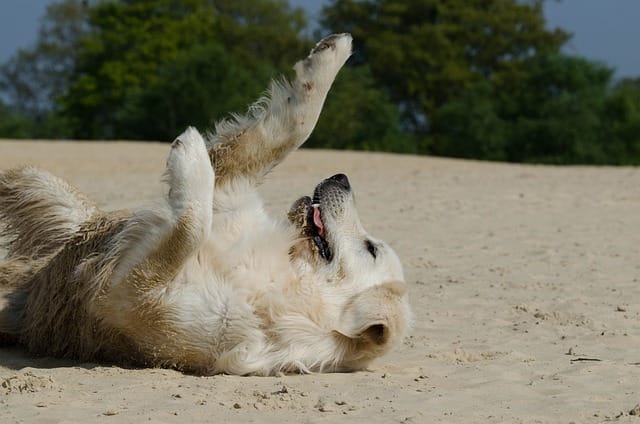Havanese Vs Maltese Breed Comparison
Are you trying to decide between getting a Havanese or a Maltese as your furry companion? If so, you’re in the right place! In this article, we’ll be exploring the similarities and differences between these two adorable dog breeds. Whether you’re looking for a small and playful companion or a stylish lap dog, we’ve got you covered. Stay tuned to discover which breed best fits your lifestyle and preferences.
Appearance
Size
Both the Havanese and Maltese are small dog breeds, but they come in different sizes. On average, Havanese dogs weigh between 7 to 13 pounds (3 to 6 kilograms) and stand about 8.5 to 11.5 inches (22 to 29 centimeters) tall at the shoulder. In contrast, Maltese dogs are even smaller, weighing only 4 to 7 pounds (2 to 3 kilograms) and measuring around 7 to 9 inches (18 to 23 centimeters) in height. So, if you’re looking for a slightly larger lapdog, the Havanese might be a better choice for you.
Coat
Both Havanese and Maltese have gorgeous coats, but they differ in texture and maintenance needs. Havanese dogs have a soft and silky double coat. The outer layer is long and straight, while the undercoat is dense and fluffy. This beautiful coat requires regular grooming to prevent matting and tangling. Conversely, Maltese dogs have a single-layered, silky coat that is long and flowing. This coat needs daily brushing to keep it looking its best, and regular trims to prevent it from dragging on the ground.
Color
The Havanese breed offers a wider range of coat colors compared to the Maltese. Havanese can come in various colors, including white, cream, black, chocolate, gold, silver, or a combination of these colors. Some Havanese even have a parti-color (patchy) coat. On the other hand, Maltese dogs are predominantly white, although some may have slight lemon or tan markings on their ears. If you prefer a more diverse color palette, the Havanese might be the breed for you.
Temperament
Personality
Both the Havanese and Maltese are known for their delightful personalities. Havanese dogs are often described as friendly, outgoing, and affectionate. They love being the center of attention and make wonderful family pets. Maltese, too, are friendly and affectionate, but they can be slightly more reserved with strangers. Despite their small size, both breeds tend to have big, courageous hearts and can be quite fearless when it comes to protecting their loved ones.
Energy Level
Both breeds have moderate energy levels, but the Havanese may be considered slightly more active. Havanese dogs enjoy playtime and outdoor activities, but they are also content to relax and be lapdogs. Maltese dogs are a bit less energetic and are happy with shorter walks and indoor play sessions. Both breeds can adapt well to different lifestyles, whether you live in an apartment or have a larger living space.
Trainability
Both the Havanese and Maltese are intelligent breeds and can be trained with patience and positive reinforcement techniques. However, the Havanese may be a bit easier to train compared to the Maltese. Havanese tend to be more eager to please their owners and are generally responsive to training. Maltese dogs, while still trainable, may have a slightly independent streak and may require more consistency and repetition in their training sessions. With proper training and socialization, both breeds can become well-behaved and obedient companions.

Health
Common Health Issues
Both the Havanese and Maltese are generally healthy breeds, but they do have some common health issues to be aware of. Havanese may be prone to conditions such as patellar luxation (knee joint problems), progressive retinal atrophy (a degenerative eye disease), and heart murmurs. Maltese dogs, on the other hand, may be prone to dental issues, patellar luxation, and white shaker syndrome (a neurological disorder). Regular veterinary check-ups, a balanced diet, and proper exercise can help minimize the risks of these health issues.
Life Expectancy
On average, both the Havanese and Maltese have a similar life expectancy. They can live between 12 to 15 years with proper care and a healthy lifestyle. Providing a nutritious diet, regular exercise, and routine veterinary care can help ensure that your beloved companion has a long and happy life by your side.
Grooming Needs
Both breeds require regular grooming to keep their coats looking their best. Havanese dogs have a long, double coat that needs brushing at least a few times a week to prevent matting and tangling. They may also need professional grooming every few months to maintain a manageable coat length. Maltese dogs, with their long, flowing coats, need daily brushing to prevent tangles and mats. Regular trips to the groomer for baths, trims, and breed-specific styling are also necessary to keep them looking their best.
Exercise
Activity Level
While both the Havanese and Maltese have moderate energy levels, the Havanese may be slightly more active. Havanese dogs enjoy having daily walks, playtime sessions, and mental stimulation. They are adaptable and can be content with indoor play on rainy days, as well as outdoor adventures. Maltese dogs, being a bit less energetic, still require daily exercise but are generally satisfied with shorter walks and indoor play sessions.
Exercise Requirements
Both breeds have exercise requirements that can easily be met by their owners. Havanese dogs should have around 30 minutes to an hour of exercise per day, including walks, playtime, and mental stimulation. This can be divided into multiple sessions throughout the day. Similarly, Maltese dogs also need around 30 minutes of exercise per day, but their exercise can be less intense due to their smaller size. Interactive toys, puzzle games, and short walks can provide them with the physical and mental stimulation they need.

Living Environment
Ideal Home
Both the Havanese and Maltese can adapt well to various living environments, making them suitable for apartments as well as larger homes. They are small breeds, so they don’t require a lot of space to roam. However, it’s important to note that both breeds thrive on human companionship and should not be left alone for extended periods. Therefore, a home where someone is present most of the time or where they have a dog sitter or daycare option would be ideal.
Suitable for Families
Both breeds make excellent family pets and are generally good with children. However, due to their small size, it is important to supervise interactions between the dogs and young children to prevent accidental injuries. Proper socialization from an early age and teaching children how to handle small dogs gently are essential to promote a harmonious relationship between them.
Compatibility with Other Pets
Both the Havanese and Maltese can get along well with other pets if properly socialized. They are generally friendly and sociable, but it’s important to introduce them to other animals gradually and under supervision. With proper introductions and positive reinforcement, they can coexist peacefully with other dogs, cats, and small pets.
Suitability as a Pet
Companionship
Both the Havanese and Maltese excel at being companion dogs. They love being a part of their human’s daily activities and are highly affectionate. They are known to form strong bonds with their owners and thrive on attention and companionship. Whether you’re looking for a cuddly lapdog or a walking buddy, both breeds will eagerly be by your side, providing you with loyal companionship.
Allergies
Both the Havanese and Maltese are considered hypoallergenic breeds. While no dog breed is completely hypoallergenic, these breeds produce fewer allergens compared to other breeds. This is because they have hair instead of fur and shed less. However, it’s important to note that allergens can still be present in a dog’s saliva and dander, so individuals with severe allergies should spend time with the breed to determine their level of sensitivity before bringing one home.
Size Considerations
Both the Havanese and Maltese are small breeds, making them ideal for individuals or families with limited space. Their small size also makes them travel-friendly and easier to handle. However, it’s important to note that their small size also means they can be more fragile and prone to injury, especially if mishandled or accidentally stepped on. Therefore, it’s crucial to handle them with care and provide them with a safe and secure living environment.
Breed History
Origin
The Havanese and Maltese breeds have fascinating historical origins. The Havanese breed originated in Cuba and is believed to be descended from bichon-type dogs brought to the country by Spanish settlers in the 16th century. They were adored by Cuban aristocrats and became popular as family companions and lapdogs. As for the Maltese breed, they have a long and rich history that traces back over 2,000 years. Ancient Romans and Greeks valued these dogs and they were favored by noblewomen throughout history.
Purpose
Both the Havanese and Maltese breeds were primarily developed to be companion dogs. They excelled in this role, providing their owners with love, companionship, and entertainment. Their small size, charming personalities, and beautiful coats made them adored companions of the elite and they quickly won the hearts of people from all walks of life.
Popularity
Both the Havanese and Maltese have gained popularity over the years. The Havanese, although still considered a relatively rare breed, has been steadily rising in popularity. Their friendly nature and hypoallergenic coat have attracted many dog lovers. Similarly, the Maltese has remained a popular breed throughout history and is known for their elegance and beauty. They can often be seen strutting their stuff in dog shows and are adored by those who appreciate a lapdog with a regal presence.
Breed Standards
Recognized Breed Standards
Both the Havanese and Maltese have recognized breed standards set by kennel clubs. For example, the American Kennel Club (AKC) recognizes both breeds and has outlined their respective breed standards. The breed standards describe the desired physical and behavioral traits for each breed and serve as a guide for responsible breeding and judging in dog shows.
Physical and Behavioral Traits
The Havanese and Maltese have distinctive physical and behavioral traits that set them apart. The Havanese has a sturdy build, a tail that curls over the back, and expressive eyes. Their playful and affectionate nature is a hallmark of the breed. On the other hand, the Maltese has a graceful appearance with a long, flowing white coat, dark, expressive eyes, and a playful and lively personality. Both breeds share a friendly and sociable nature, making them beloved companions worldwide.
Training
Trainability
Both the Havanese and Maltese are intelligent breeds and can be trained with patience, consistency, and positive reinforcement methods. However, the Havanese may have a slight edge in trainability. They are eager to please their owners and are generally quick learners. Maltese dogs, while still trainable, may have a bit more independence and stubbornness, requiring more patience and repetition in their training sessions.
Obedience
With the right training methods, both breeds can become obedient companions. It’s important to start obedience training from an early age to establish good habits and boundaries. Basic commands such as sit, stay, come, and down can be taught through positive reinforcement techniques and rewards. Consistency, patience, and a calm and positive tone will contribute to successful obedience training for both breeds.
Socialization
Proper socialization is crucial for both the Havanese and Maltese breeds. Introducing them to a variety of people, animals, and environments from a young age will help them develop into well-rounded and confident dogs. Socialization can include visits to different places, meeting new people and pets, and exposure to various sounds and situations. Early socialization sets the foundation for a well-behaved and sociable companion.
Cost
Initial Cost
Both the Havanese and Maltese breeds can have a significant initial cost. The price can vary depending on factors such as the breeder’s reputation, bloodline, location, and demand for the breed. On average, Havanese puppies can cost anywhere from $1,000 to $2,500, while Maltese puppies can range from $1,500 to $4,000 or more. It’s important to do thorough research and find a reputable breeder who prioritizes the health and well-being of their dogs.
Ongoing Expenses
Owning a dog comes with lifelong expenses, and both the Havanese and Maltese are no exception. Ongoing expenses include high-quality dog food, regular veterinary check-ups, vaccinations, preventive medications, grooming costs, toys, and accessories. On average, the annual cost of owning a Havanese or Maltese can range from $1,000 to $2,500, depending on variables such as the dog’s size, health, and lifestyle.
Potential Medical Costs
While both breeds are generally healthy, it’s important to be prepared for potential medical costs throughout their lives. Regular vet check-ups and preventive care can help catch any health issues early on. However, unexpected medical costs can still arise, such as emergency veterinary care, dental procedures, or treatment for genetic or age-related conditions. Pet insurance can provide some financial protection and peace of mind in case of major medical expenses.













